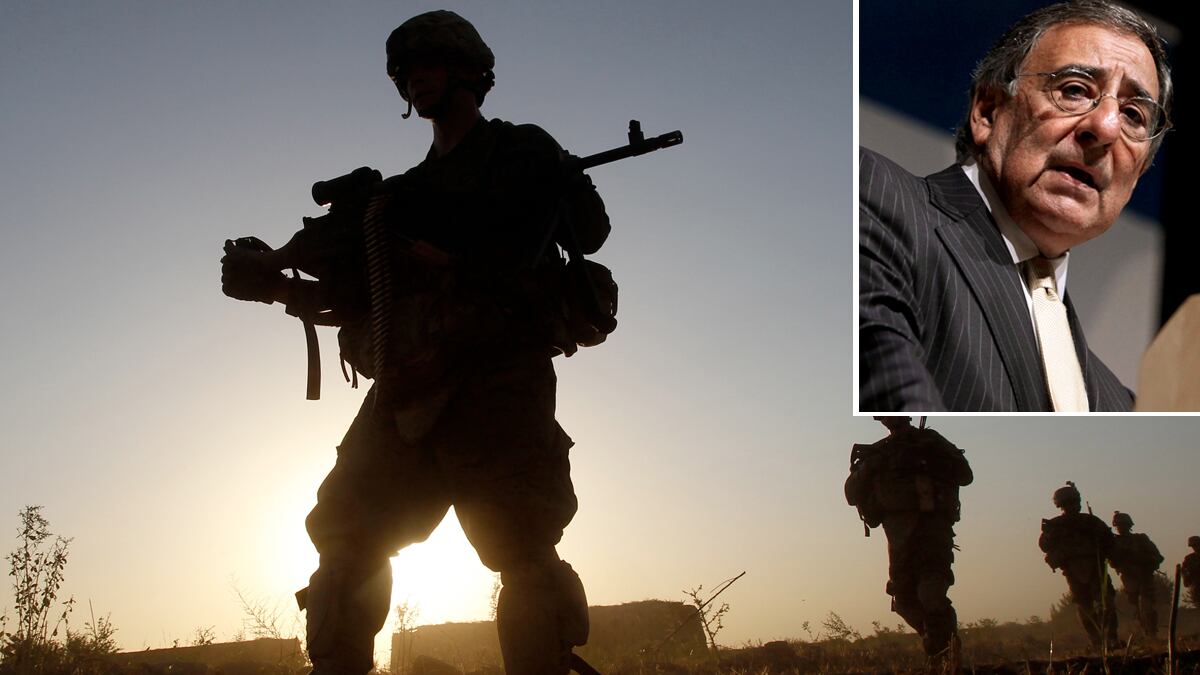How many wars does the United States really need to be able to fight at a time? We have just been waging two at once, but at least one of those was optional, and presumably Iraq has become a less likely future foe in any event.
Secretary of Defense Leon Panetta has just said that he must continue, even in an era of severe defense-budget restraint, to plan U.S. ground forces with an eye toward being able to handle more than one at a time. This puts him right in the center of the modern U.S. defense-planning consensus. After the Cold War ended, defense secretaries as disparate as Cheney, Aspin, Perry, Cohen, Rumsfeld, and Gates (in other words, all of the last six) built their combat force structures around a two-regional-war logic—or at least that goal. They would usually describe the most likely adversaries as Saddam Hussein and the Kims of North Korea, though other scenarios were envisioned as well.
But now Saddam is gone. And while the broader logic of being able to engage in two major military operations at once remains valid, it is an open question as to whether the same kinds of capabilities are still needed to address key scenarios. Specifically, while Iran and China in particular now pose eminently plausible maritime challenges, it is unclear that we need still hedges against the possibility of simultaneous ground wars resembling Operation Desert Storm or Operation Iraqi Freedom.

This is not an argument for cutting the U.S. Army and Marine Corps disproportionately in the years ahead. Even if only North Korea still seems to pose the kind of threat that could require a major ground campaign, surprises could happen. But most imaginable challenges would not be classic wars. Much more plausible are major types of unrest in countries just too important to ignore because of the potential dangers of terrorism, nuclear proliferation, or regional spillover. As much as we have tired of them, the result could be multilateral stabilization and counterterrorism operations—perhaps shoring up Afghan stability even after major NATO combat efforts end in 2014, or helping secure an Arab country like Syria or Yemen now in turmoil, or underwriting security in a new Palestinian state after a peace deal is finally forged, or helping Pakistan and India police a cease-fire after yet another war between them that comes perilously close to nuclear holocaust.
We should therefore not continue to base force planning for the U.S. Army and Marine Corps on a classic two-Desert Storm foundation. That paradigm has outlived its usefulness. It is at once too demanding for a country facing such acute financial problems as ours, too simplistic for the types of demanding missions American ground forces may have to conduct in the future, and too ignorant of the fact that air and naval engagements in the Western Pacific or Persian Gulf have also become serious threats to U.S. security.
Rather than the old two major theater war concept, the Army and Marine Corps should plan for something more like a “1+ 2” capability. The one war would most likely be in regard to North Korea—where we are fortunate to have a formidable ally in the South Korea, but where the combination of terrain, North Korea’s huge armies, and North Korea’s nuclear weapons would make any war extremely stressing. The two smaller operations would be protracted, dangerous, coalition missions to help stabilize crucial countries, most likely in the broader Middle East region. They might involve one to three brigades each (up to say 25,000 U.S. troops), but over several years. Ideally we would not have to conduct two, or even one, at a time in the future. But force planning requires reasonable worst-case planning.
This new approach would hardly be a retreat from the world. Combining the ground-force requirements with preparation for possible crises near China and Iran, it would in fact allow us the capacity to carry out not one or two but, if necessary, several significant operations at once. But it would allow selective cutbacks in capabilities we no longer need as much as we once did, while ushering in a more realistic and flexible kind of force planning for the future. Ground forces might wind up slightly smaller than in the 1990s, and structured somewhat differently. It is the kind of choice we will have to make even to achieve Panetta’s $400 billion 10-year defense-spending reductions.






